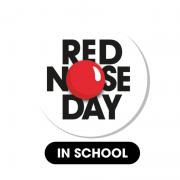October 9, 2018
#ReimagineRecess: Managing Conflict at Recess
This blog is part of a series on fostering social and emotional development at recess, in support of our campaign, “Reimagine Recess”, presented in partnership with Red Nose Day in School and Laureus USA.
According to elementary school principals, most discipline-related problems in school occur during recess.*
You’ve seen it before! When the bell rings for recess and kids run to the playground, cafeteria, gymnasium or around the classroom, conflicts can quickly arise in selecting the games they want to play, the number of kids who can play, and who gets to play. Feelings are quickly hurt, and kids are quickly excluded.
But, your recess time can easily be reimagined to teach conflict resolution skills. Students can practice making responsible decisions – “constructive choices about personal behavior and social interactions based on ethical standards, safety concerns and social norms”** – that can resolve conflict quickly and easily.
Staff are key contributors to a safe and healthy recess. Are your staff and recess supervisors ready to teach and help students manage conflict? Let’s reimagine what your recess can look like!
Before Recess…
Take time at your staff trainings to talk about the importance of activities that require cooperation and teamwork rather than competition. Break into small groups to discuss how everyone can foster a sense of belonging through physical activity.
Transitioning to Recess…
Transition time to and from recess is another key place where conflicts arise! Consider these “Easy Ways to Increase Physical Activity” to avoid conflict.
During Recess…
Adult leaders can demonstrate inclusive cooperative physical activity by building in time to reflect, highlight positive communication and respect, and use conflict resolution techniques and skills. Positive communication, inclusion, and conflict resolution are important to emphasize with recess staff to ensure they understand the safe and healthy environment your school is dedicated to fostering.
When potential disagreements do arise, encourage students to resolve conflicts on their own by using simple games like “rock, paper, scissors.”
Creating a safe and active recess environment allows children to be more physically active and supports social and emotional learning. Improving the social and emotional skills of students can reduce many issues often associated with recess such as bullying.
How do you incorporate conflict resolution into recess? Share a photo of your reimagined recess on social media using #ReimagineRecess. Learn more at www.reimaginerecess.org
Want to take your recess a step further? Visit RedNoseDayinSchool.org for additional resources to help foster social-emotional learning and empathy-building in the classroom.
* Gallup. (2010). The state of play: Gallup survey of principals on school recess. Princeton, NJ: Robert Wood Johnson Foundation.
**CASEL (https://casel.org/core-competencies/)


